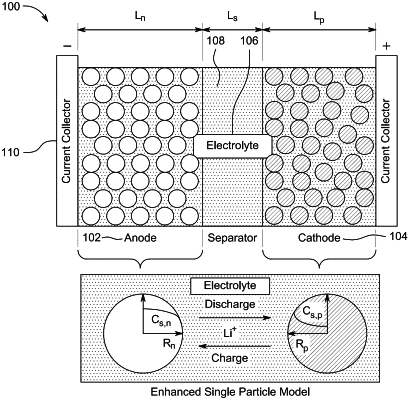| CPC G01R 31/367 (2019.01) [G01R 31/3842 (2019.01); G01R 31/392 (2019.01); H02J 7/0048 (2020.01); H02J 7/005 (2020.01)] | 19 Claims |

|
1. A battery monitoring system comprising:
a battery capable of generating an electric profile signal in the form of voltage and current data;
an adaptive cathode observer configured to receive the electric profile signal with respect to a cathode of the battery; and
an adaptive anode observer configured to receive the electric profile signal with respect to an anode of the battery;
wherein each of the adaptive cathode and anode observers utilize an electrochemical model of the battery to generate data describing an estimated ion concentration and a solid electrolyte interphase layer ionic conductivity at the cathode and the anode of the battery, and wherein the electrochemical model is used to calculate a state of health and a state of charge of the battery and wherein the adaptive cathode and adaptive anode observers update the estimated ion concentrations based on the calculated state of health and state of charge.
|